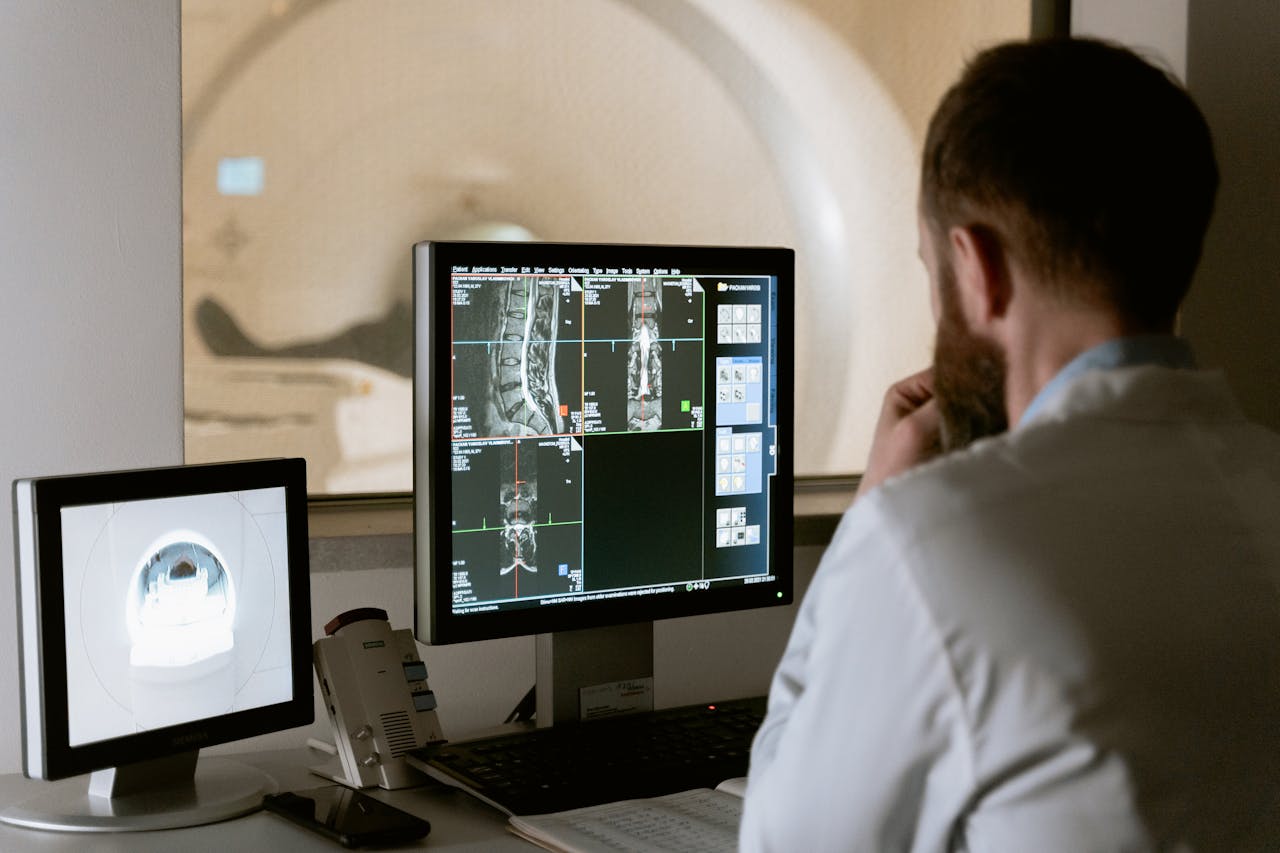About Digital Health
A Digital Health System refers to the integration of digital technologies, data analytics, and communication tools into healthcare practices and systems to improve patient care, enhance operational efficiency, and facilitate better health outcomes. It encompasses a wide range of technologies and applications that aim to transform the way healthcare is delivered and managed. Here are some key components and aspects of a Digital Health System:
- Electronic Health Records (EHRs): EHRs are digital versions of patients’ medical records, including their medical history, diagnoses, medications, and treatment plans. These records enable healthcare providers to have a comprehensive view of a patient’s health, leading to more informed decision-making and coordinated care.
- Telemedicine and Telehealth: Telemedicine involves using technology to provide remote medical consultations and healthcare services. This can include video calls, phone consultations, and remote monitoring of patients’ vital signs. Telehealth encompasses a broader range of digital health services, including education, remote monitoring, and health management.
- Mobile Health (mHealth) Apps: These are applications designed to be used on smartphones and other mobile devices to track health information, provide medication reminders, offer fitness and wellness advice, and even facilitate communication between patients and healthcare providers.
- Wearable Devices: Wearable health devices, such as fitness trackers and smartwatches, can monitor various health metrics, including heart rate, steps taken, sleep patterns, and more. These devices provide users with real-time health data and insights, which can be shared with healthcare professionals for better assessment and guidance.
- Health Information Exchange (HIE): HIE platforms allow for the secure exchange of patient health information between different healthcare organizations and providers. This promotes continuity of care, reduces duplication of tests, and enhances care coordination.
- Health Analytics and Big Data: Digital health systems generate vast amounts of data. Analytics tools can process and analyze this data to identify trends, patterns, and insights that can inform healthcare decisions, population health management, and research.
- Artificial Intelligence (AI) and Machine Learning: AI algorithms can be applied to medical data to assist in diagnostics, treatment planning, and predicting patient outcomes. Machine learning models can learn from large datasets to make more accurate predictions and recommendations.
- Remote Patient Monitoring: This involves using digital devices to monitor patients’ health conditions remotely. For example, patients with chronic illnesses can use devices to measure their blood pressure, blood sugar levels, or other vital signs, which are then transmitted to healthcare providers for assessment.
- Virtual Reality (VR) and Augmented Reality (AR): VR and AR technologies are being explored in healthcare for purposes such as medical training, pain management, exposure therapy, and patient education.
- Blockchain in Healthcare: Blockchain technology can provide secure and tamper-proof storage and sharing of healthcare data, enhancing data security, interoperability, and privacy.
- Healthcare IoT (Internet of Things): IoT devices can be used to monitor patient health, track medical equipment, and manage hospital facilities.
The goal of a Digital Health System is to improve patient outcomes, streamline healthcare processes, reduce costs, enhance patient engagement, and ultimately transform the healthcare industry to be more patient-centric and efficient. However, the implementation of such systems also comes with challenges related to data security, privacy, interoperability, and regulatory compliance.
Principles of Digital Health
The principles of digital health are a set of guiding concepts and values that underpin the development, implementation, and use of digital technologies in healthcare. These principles help ensure that digital health solutions are effective, safe, patient-centered, and aligned with ethical and regulatory considerations. While the specific principles may vary based on context and region, here are some common principles of digital health:
- Patient-Centered Care: Digital health solutions should prioritize the needs, preferences, and experiences of patients and caregivers. The technologies should empower patients to actively participate in their healthcare decisions and enable them to access and manage their health information easily.
- Safety and Quality: Patient safety is paramount. Digital health solutions should adhere to rigorous quality standards and regulations to minimize risks associated with data breaches, misdiagnoses, or other errors. Ongoing monitoring and evaluation are essential to ensure that these solutions maintain high safety standards.
- Data Privacy and Security: Protecting patient data is crucial. Digital health systems must follow strict privacy regulations and implement robust security measures to safeguard sensitive health information from unauthorized access, breaches, and misuse.
- Interoperability: Digital health technologies should be designed to seamlessly exchange information and data across different systems and platforms. Interoperability ensures that patient information can be shared accurately and efficiently between healthcare providers, facilities, and systems.
- Ethical Use of Data: The collection and use of patient data should adhere to ethical principles, including obtaining informed consent, maintaining data transparency, and ensuring that data is used only for its intended purposes. Data anonymization and de-identification techniques should be employed when appropriate.
- Usability and User Experience: Digital health solutions should be user-friendly, intuitive, and accessible to a wide range of users, including patients, caregivers, and healthcare professionals. A positive user experience promotes engagement and adoption.
- Evidence-Based Practice: The development and implementation of digital health solutions should be informed by scientific research and evidence. Solutions should be validated through clinical trials and studies to ensure their effectiveness and safety.
- Regulatory Compliance: Digital health technologies should adhere to relevant regulations and standards in the healthcare and technology sectors. This includes compliance with medical device regulations, data protection laws, and healthcare-specific guidelines.
- Continual Innovation and Improvement: Digital health is a rapidly evolving field. Solutions should be designed to adapt to new technologies, best practices, and emerging healthcare needs. Regular updates and improvements should be based on feedback from users and stakeholders.
- Collaboration and Partnerships: Successful digital health implementation requires collaboration among various stakeholders, including healthcare providers, technology developers, regulatory agencies, and patient advocates. Partnerships foster a holistic approach to healthcare transformation.
- Equity and Accessibility: Digital health solutions should aim to reduce healthcare disparities by ensuring that vulnerable populations have equitable access to technology, regardless of factors such as socioeconomic status, geography, or disabilities.
- Education and Training: Healthcare professionals, patients, and caregivers should receive appropriate education and training to effectively use and benefit from digital health tools. Education ensures that users can navigate and utilize these technologies correctly.
These principles collectively guide the responsible and ethical development of digital health solutions, enabling them to contribute positively to healthcare delivery and patient outcomes.





